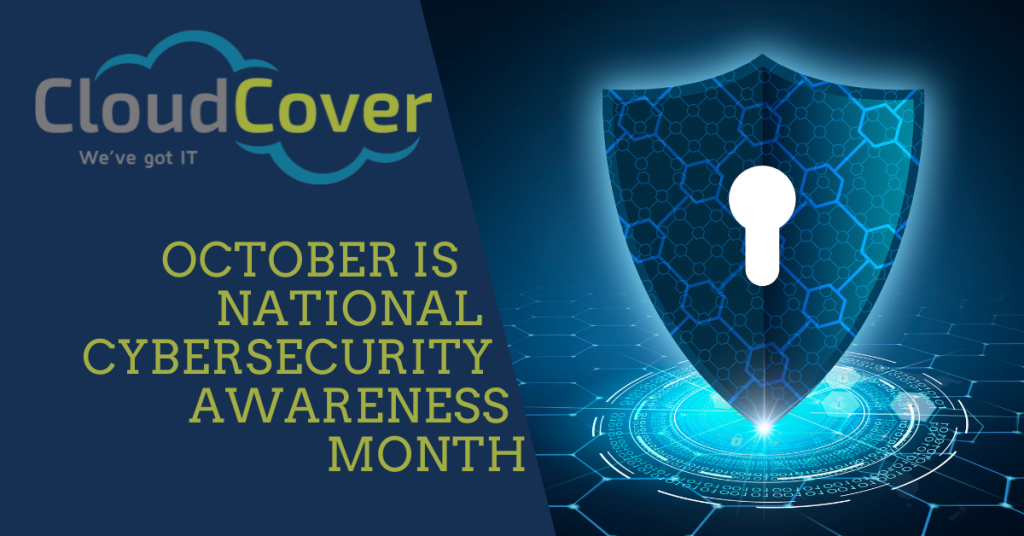October marks the annual observance of National Cybersecurity Awareness Month (NCSAM), a critical initiative aimed at educating individuals and organizations about the importance of cybersecurity. As cyber threats become increasingly sophisticated, this month serves as a reminder of the need for vigilance and proactive measures to protect our digital assets. In this blog post, I will explore the significance of NCSAM, outline common cybersecurity threats, and provide actionable strategies to enhance your cybersecurity posture.
The Significance of National Cybersecurity Awareness Month
National Cybersecurity Awareness Month was established in 2004 through a collaborative effort between the U.S. Department of Homeland Security and the National Cyber Security Alliance. The initiative seeks to promote awareness and underscore the importance of cybersecurity in our daily lives. By raising awareness, NCSAM aims to empower individuals and organizations to take proactive steps to secure their information technology systems and protect sensitive data.
Common Cybersecurity Threats
Understanding the landscape of cybersecurity threats is fundamental to developing effective defense strategies. Here are some common cybersecurity threats that individuals and organizations may fall victim to:
1. Phishing Attacks
Phishing remains one of the most common and dangerous cyber threats. Attackers leverage deceptive emails, messages, or websites to trick individuals into revealing sensitive information, such as passwords and financial details. These attacks often appear legitimate, making them particularly challenging to recognize. One of the ways organizations can help avoid these attacks is by training and phish testing their teams. This helps educate people on what to look for and if you know there is a possibility of getting "phished" by your IT team, you are probably more likely to avoid more of the real attacks.
2. Ransomware
Ransomware is a malicious software that encrypts a victim's files, making them inaccessible. The attackers then demand a ransom, often in cryptocurrency, in exchange for releasing their files. These attacks can cause financial losses and operational disruptions for both businesses and individuals. The impact can be long-lasting, emphasizing the need for strong security measures and awareness.
3. Malware
Malware includes various harmful software like viruses, worms, spyware, adware, and trojans, each with unique methods to breach systems. Viruses attach to programs and replicate, causing damage. Worms spread across networks, leading to congestion and data loss. Spyware secretly gathers sensitive user data, while adware tracks browsing habits. Trojans pose as legitimate software to allow unauthorized access. Once on a device, malware can steal, delete, or encrypt data and monitor user activity
4. Social Engineering
Social engineering exploits human psychology, not tech vulnerabilities. Attackers manipulate trust, fear, or urgency to extract confidential info. They may pose as trusted figures via calls, emails, or text messages to deceive individuals. One thing we see a lot is when an attacker tries to impersonate IT support to obtain login details. This happens with emails and even pop ups on websites asking you to click on the link to secure your systems, reset your account profile or even scare someone into thinking they have been compromised. Combating this requires education and awareness. Understanding these tactics, fostering skepticism, and regular training help individuals and organizations resist such manipulative attacks.
Strategies for Enhancing Cybersecurity
1. Implement Strong Password Policies
Use strong, unique passwords for each account to reduce unauthorized access risks. A good password mixes letters, numbers, and symbols. Avoid easy-to-guess info like birthdays. Password managers help create and store secure passwords, preventing reuse across sites. Enable multi-factor authentication (MFA) for extra security by requiring an additional verification factor alongside your password. These practices significantly enhance security and protect data from cyber threats. We are seeing more insurance companies requiring organizations to implement a company wide password policy in order to get cyber liability coverage.
2. Enable MFA For All of Your Critical Accounts
MFA requires two or more verification methods for account access, adding extra security beyond passwords. Even if a password is compromised, unauthorized access is blocked without the additional factor, like a code via SMS, an authenticator app, or biometric verification. MFA significantly reduces unauthorized access risks, safeguarding sensitive information. Many organizations mandate MFA to meet security policies and regulations. Prioritize enabling MFA on your critical accounts to protect your data fully.
3. Regular Software Updates
4. Educate and Train Employees
5. Backup Data Regularly
National Cybersecurity Awareness Month serves as a vital reminder of the ever-present cyber threats that loom over individuals and organizations. By understanding common threats and implementing robust cybersecurity practices, we can collectively enhance our defenses and safeguard our digital lives. Let us use this month as an opportunity to educate ourselves and others, ensuring that we remain vigilant in the face of evolving cyber challenges.

Thank you to our friend Holli Houseworth Langford with Cloud Cover for providing this valuable information.
If you are interested in being featured on our Family Business Insights or have any questions please contact lflint@familybusinesscenter.com

